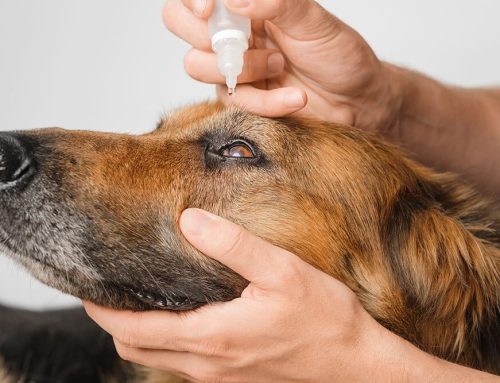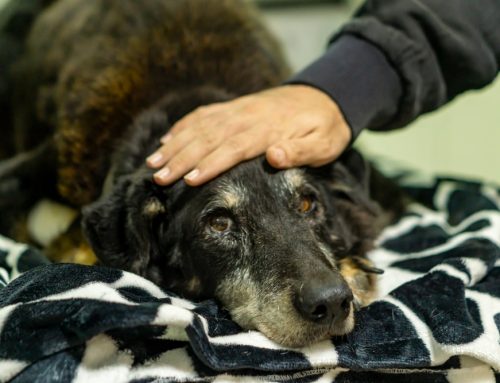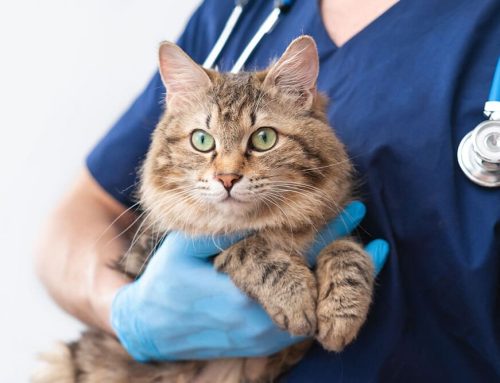At Northwood Veterinary Hospital, we understand that no one knows your pet better than you do. That’s why when your dog or cat suddenly seems off, it’s important to trust your instincts. Changes in behavior—big or small—can be your pet’s way of telling you something isn’t right.
This guide will help you recognize behavioral red flags that may signal underlying health problems and know when it’s time to call your veterinarian.
Why Pet Behavior Changes Matter
Dogs and cats can’t tell us when they’re in pain or feeling unwell—but they do show us. A shift in energy, mood, habits, or personality can be the first sign of a medical issue, emotional stress, or even a neurological condition.
Behavioral changes are often subtle at first, but early intervention can prevent small issues from becoming serious health problems.
Common Causes of Sudden Behavioral Changes
Medical Issues
- Pain or discomfort – Pets may hide, growl, avoid touch, or become suddenly aggressive when something hurts.
Signs of pain in pets - Infections or illness – Urinary tract infections, dental disease, and internal conditions can cause anxiety, accidents, or unusual behavior.
- Hormonal imbalances – Conditions like feline hyperthyroidism can cause irritability, hyperactivity, and restlessness.
Feline Hyperthyroidism Guidelines – AAHA - Cognitive decline – In older pets, confusion, pacing, or house soiling may signal cognitive dysfunction syndrome (CDS), similar to dementia in humans.
- Neurological problems – Seizures, brain inflammation, or tumors can lead to sudden personality changes.
Emotional or Psychological Stress
- Separation anxiety – Can cause pacing, barking, house-soiling, or destructive behaviors when left alone.
- Environmental stress – Moving to a new home, a change in routine, or the addition of a new family member (human or animal) can trigger anxiety or depression.
- Fear and trauma – Past abuse, loud noises, or overwhelming situations can cause pets to become withdrawn, fearful, or reactive.
Common Dog Behavior Issues – ASPCA
Behavior Changes to Watch in Dogs
- Unprovoked aggression or growling
- Lethargy or disinterest in play, food, or family
- Excessive vocalization, barking, or howling
- Sudden destructive behavior like chewing furniture or doors
- Increased clinginess or hiding
More on dog behavior issues – Merck Vet Manual
Behavior Changes to Watch in Cats
- Aggression toward people or other pets
- Over-grooming or lack of grooming leading to greasy, matted fur
- Avoiding social interaction or hiding more than usual
- Sudden urination or defecation outside the litter box
- Vocalizing more—or less—than usual
Tension among cats? Here’s how to help – AAHA
Red Flag Behaviors in Any Pet
- Sudden loss of appetite
- Accidents in the house (especially in a previously housetrained pet)
- Unusual sleeping patterns
- Excessive pacing or restlessness
- Dramatic changes in energy level

These behaviors often go unnoticed—until they don’t. If you spot a shift, it’s always better to be safe and have your vet take a closer look.
Conditions That Commonly Cause Behavioral Changes
| Underlying Issue | How It Might Present |
| Arthritis or joint pain | Aggression, difficulty moving, avoiding stairs |
| Urinary tract infection | Accidents, vocalizing during urination, licking genital area |
| Dental disease | Refusal to eat, pawing at face, irritability |
| Hyperthyroidism (cats) | Weight loss, hyperactivity, increased vocalization |
| Cognitive dysfunction | Disorientation, changes in sleep/wake cycles, anxiety |
| Seizure disorders | Confusion, twitching, sudden aggression or zoning out |
When to Call the Vet
Call immediately if your pet is:
- Suddenly aggressive without warning
- Not eating or drinking for 24+ hours
- Struggling to breathe
- Experiencing seizures or tremors
- Suddenly disoriented or stumbling
Schedule an exam if your pet is:
- Showing gradual but persistent changes in personality
- Becoming more withdrawn or anxious
- Licking, scratching, or over-grooming excessively
- Having trouble with normal daily routines
What to Expect During a Veterinary Visit
When you bring your pet in for a behavior-related concern, here’s what we’ll do:
- Physical exam to check for sources of pain or illness
- Behavioral history review—you’ll help by sharing what you’ve observed at home
- Diagnostic testing (like blood work or x-rays), if needed
- Treatment recommendations, which may include medication, pain management, behavior modification, or referrals to a veterinary behaviorist
Explore our services at Northwood Veterinary Hospital
What You Can Do at Home
Keep a Behavior Log
Note when the behavior started, how frequently it happens, and any triggers or patterns. This helps your vet get a clearer picture.
Monitor Changes Closely
Don’t wait until a small behavior change becomes a full-blown emergency.
Trust Your Gut
If something seems off—it probably is. Reach out to our team. We’re always happy to talk through your concerns.
You Know Your Pet Best
Behavior is how your pet communicates. When that communication changes suddenly, it’s a call for help—and you’re their first responder.
At Northwood Veterinary Hospital, our compassionate, experienced team is here to guide you through every behavioral concern with care, empathy, and medical insight.
Contact us today to schedule a behavioral consultation or exam.
We’re proud to be your trusted partner in keeping your pet happy, healthy, and understood.







Leave A Comment